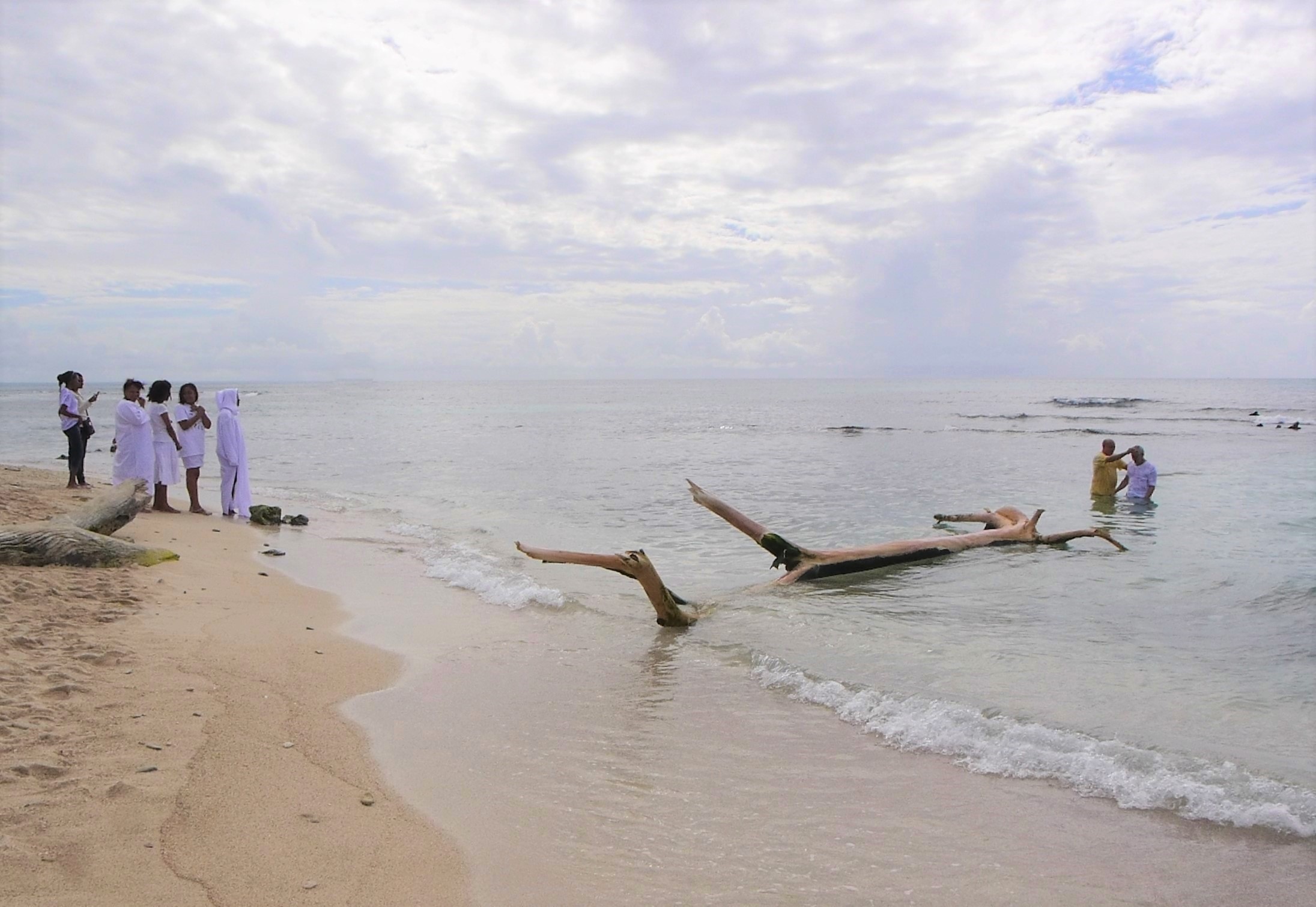On a beach shortly after dawn in the Dominican Republic, a group of Haitians wait to enter the sea where they will be lowered into the water and re-emerge, born again as Christians. For some Christians, baptism is a rite-of-passage that can mark a rupture with the past. In social theory, baptism is more akin to Berger’s characterization of a photograph, “a moment taken from a continuum” (2001:217). For converts, this could be the baptism classes that led up to this moment and the many life changes that may follow it. This image—snapped right before the first convert is submerged—invites us to reflect on how one moment from a continuum can also be profoundly transformative.
Conversion, literally the process of changing from one form to another, not only transforms religious identity, but also radically restructures social experience (Howell 2008). This holds particularly true for members of minority groups, for whom conversion can be a means to cope with discrimination and other forms of oppression (Louis 2014). The history of Haitians’ incorporation into the Dominican Republic is encumbered by violence, including forced labor and the Parsley Massacre that killed thousands. Present-day Haitians face a political climate that has brought statelessness, deportation, and heightened racial profiling. This image is a visual representation of the ways religion can provide hope from one’s surroundings. The sea is expansive, yet the water is tranquil, with washed, pastel colors. While clouds have formed overhead, brightness seeps through them and pours across the scene. The light transcends everything else, like the way a Christian identity can supersede one’s stigmatization as Haitian. Illuminated by the morning sun, the converts are almost glowing as they embark on a new day, a new identity, and a new life.
When I took this shot, the normally crowded beach was empty except for a few fishermen heading out in their boats. I had been following other converts to the water that day. When the two groups realized that the same purpose had brought them there, they joined voices in song. They were not from the same church, yet the baptism symbols, like those of any shared ritual, were recognized as meaningful. Take the prospective converts, adorned in white, a symbol of the purity they seek in rebirth through baptism. They line up single file, signifying that this is a step that they must take alone. The horizontal lines of the image create a stillness. Yet, there is also anticipation as the man in yellow begins the motions to immerse the other into the water, cleansing him of the sins of his past.
Rituals work by effecting contact between the present state and the cosmos (Rappaport 1999). For converts, the most important component of this image lies in “what is not seen”—and cannot be seen—the relationship with an invisible God (Berger 2001:217). However, shot at a distance with a wide focus, the small figures in the image are calmly engulfed by empty space to emphasize the grandiosity of nature. The bright celestial sky almost blends into the sea as if a divine force is reaching down to them. Parallel to the horizon, the converts stand along the center line of the image. Like the ritual, they are balanced between the heavens and the Earth.
Waiting on the sand, the hooded figure stares straight ahead, suggesting confidence. With hands raised to their faces, two women display slight trepidation, perhaps anticipating this important decision or maybe just the brisk water. At the back, a woman raises her phone to document the day. Photographers employ their own rituals to capture and convert the material present into a two-dimensional representation. Yet when used in retelling conversion to negotiate marginalized identity, the photograph recreates the experience and becomes a ritual itself (Stromberg 1993). In a flash, changing from one form to the next, conversion and the production of images like this one can powerfully transform lives.

Commentary on Rachel Tanur's Works: Gondola Newlyweds 01